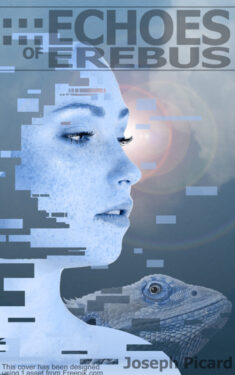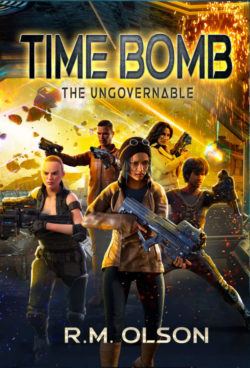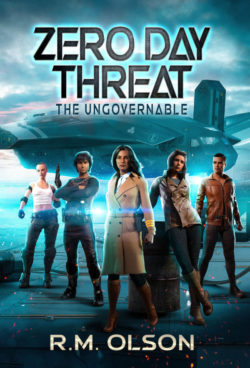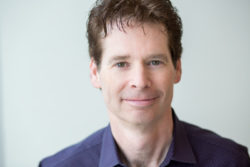The Dynamicist Trilogy Book Three
by
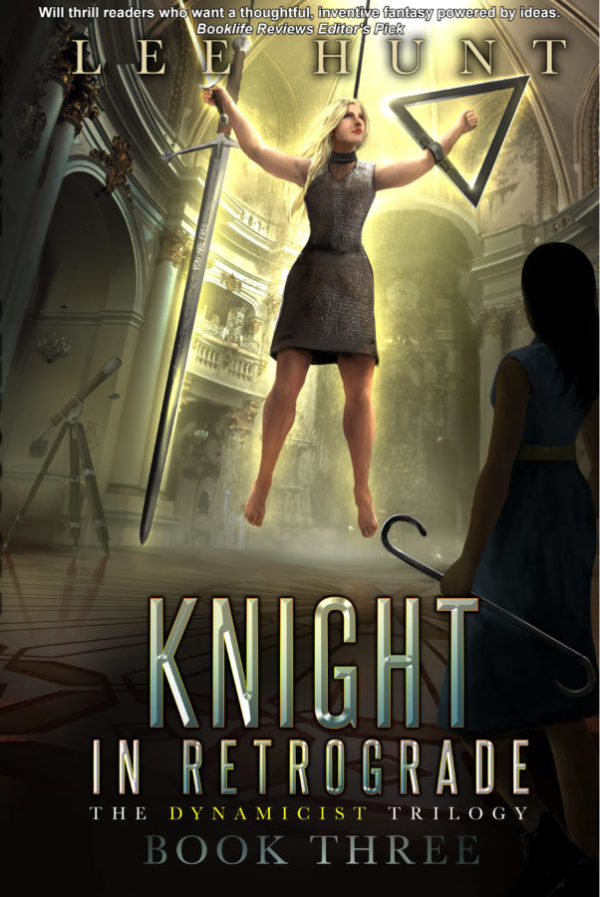
- 1 Read list
Publisher: Independently Published
Editors:
Cover Artists:
Genres:
Tropes: Farmer to Hero, Humanity is Dangerous, Humanity is Good
Word Count: 177,000
Setting: The World of Dynamicist
Languages Available: English
Series Type: Continuous / Same Characters
Tropes: Farmer to Hero, Humanity is Dangerous, Humanity is Good
Word Count: 177,000
Setting: The World of Dynamicist
Languages Available: English
Series Type: Continuous / Same Characters
Kirkus Reviews on Kirkus Reviews wrote:(Editor's Pick)
Doubt, grief, and maturity now weigh upon the once-eager young science-magicians of Hunt’s Dynamicist Trilogy (which opened with Dynamicist and Herald), but the thoughtful fantasy series’ sprawling and ambitious final volume finds their creator telling their story with new confidence and clarity. As Robert Endicott and his cohort of dynamicists take up the ancient quest for a lost bridge and barrel toward a final showdown with Nimrheal, the demon that has turned the world against new ideas and technology, Hunt expands the scope of his saga to include a mature treatment of sex and loss. Several chapters chronicle gumshoe police work in a fantasy city so entertainingly that they could inspire their own novel.
This is the longest book of the series by far, but also as its most arresting and pleasurable. The characters seem more real now that they’re no longer schoolkids, and Hunt cuts nimbly among this epic’s many interwoven protagonists, quests, and mysteries. The climax is suitably epic, though the wrap-up afterwards ends abruptly. Hunt still relies on sound effects for excitement in his action scenes (expect a lot of “CRRRRRRAAAK”), but the conflicts here don’t need all that extra noise. They’re tense and exciting already.
The previous books plumbed complex ideas, with an emphasis on economics, agriculture, and the morality of the violence that fantasy films and games too often present as simple escapism. This volume adeptly balances Hunt’s deeper interests with the pacing of an exciting story, and disquisitions on abstruse topics no longer slow the storytelling. The passages that probe Endicott’s regrets over a fallen comrade, or that lay out the mathematical logic behind dynamicist techniques, rise compellingly from narrative and character. Rather than detract from the action, they illuminate it. This is a sterling end to a rich, concept-driven series.
Takeaway: This trilogy finale will thrill readers who want thoughtful, inventive fantasy powered by ideas.
Great for fans of Seth Dickinson, Daniel Abraham.
Production grades
Cover: B+
Design and typography: A-
Illustrations: -
Editing: A
Marketing copy: A-
Wendy Ross on Amazon.ca wrote:In this third installment of a series, a group of heroes confronts a formidable demon who wants to thwart societal progress.
Four years after eliminating the mad professor Keith Euyn, Sir Robert Endicott and his fellow Knights of Vercors continue to shape a better world. Their ambitious and dangerous Lighthouse plan would tame the Ardgour Wilderness that lies beyond the fields of the New School’s genetically engineered grain. The Knights, including Sir Eloise Kyre and Lord Gregory Justice, must help push back the skolves (humanoid wolves) and potentially battle the demons Skoll and Hati. Other key components of the mission are testing the Javelin communication system and eventually finding the lost Bifrost Bridge connecting all to the ethereal Methueyn Knights. Accomplishing these objectives will require the Knights’ dynamicist skills, which manipulate thermodynamics to alter probabilities. But the use of these abilities typically summons demons. Dynamicist Heylor Style knows their wrath well. His team of eight died fighting otherworldly monstrosities in the wilderness. He’s now back in Vercors, partnered with the understanding and even-tempered Constable Lynwen. He finds himself instantly smitten with her. They investigate a series of strange hangings, appearances by a cloaked man, and yet more protests at the New School. People once again prove distrusting of scientific solutions, this time a vaccine for goose fever. The real danger is that any instance of true scientific invention will bring forth Nimrheal, the demon who punishes innovators. Little does Robert realize that he and his love, Koria Valcourt, have already been punished. She suffered a stillbirth and fails to tell him before he leaves for an operation.
This final volume of Hunt’s fantasy trilogy bursts at the seams with notions of science, spirituality, and politics pertaining to the 21st-century political climate. He underlines a main theme of his series—that progressive society must remain vigilant against ignorance—by including vaccines, the bugaboo of conspiracy-minded parents, in the plot. Nimrheal is a literal beast to slay, but he also represents the amorphous forces of disinformation and dogma that plague industrialized nations. And while it’s true that “bad people succeeded because they were allowed to,” as Eloise believes, sometimes evil “had no face, no armor, certainly no name. There was no rational knowledge or true understanding of it to be had.” Notably intertwined with these epic happenings are Heylor’s personal struggles. He suffers an ever diminishing sense of self after running from a fight and losing his soldiers. When Lynwen accepts Heylor’s embarrassing family, he becomes attached to her. Readers also learn that Heylor used to bully someone in his youth and still harbors shame, despite outgrowing such abhorrent behavior. His grounded character arc is exceptional, as he’s surrounded by others, like Robert and Eloise, who seem like perfect heroes. These last two deliver plenty of straightforward fantasy action, as when “Eloise put her entire body into a ferocious lateral strike that cut the skolve in half at the waist.” But the unique pulse of this series remains the author’s dedication to thematic sprawl and a hard-science magic system.
Strong characters face a maelstrom in this intense, intellectually rigorous fantasy series finale.
wendy ross
5.0 out of 5 stars Fantasy World Building that Reflects on the 21st Century
Reviewed in Canada on September 19, 2020
Verified PurchaseFour years have passed and the dynamicist students of the New School are adults now. The identities of the Lonely Wizard and the cloaked man have been revealed. And for all of their idealism and abilities they still live in an era that fears change and holds a belief in old-order knights, angels, demons, and a transcendental being named Nimrheal who literally kills those who create or innovate.
In this final novel of the trilogy, Hunt changes things up and tells the tale from multiple points of view tunneling down into the nature/nurture experiences that make each character who they are. This structure makes the book more diverse and complex in nature. It’s probably his best of the three.
Still, underneath this fantasy world, there is an allegory of the dark ages and control of populace by church dogma. And it pays homage to a renaissance of creativity, science, and innovation that propel cultures forward. It highlights the price paid by the courageous and dedicated individuals who make the sacrifices for this enlightenment. There are strong female characters and a dive into the nature of sexuality and love that rises to the rapture of a spiritual experience. Here the old guard makes way for the new humanism of the dynamicists who must make tough choices, take harrowing journeys, and bear ultimate decisions.
Both the genetically modified grain and the goose fever vaccine are timely comments on our own milieu and the continued suspicion and distrust of science in the 21st century. Yet Hunt’s dynamicists see a world beyond swords and war and beyond myth and dogma, making them scientists fully humanized where change is a creative, scientific innovation. Love, courage, and reason triumph. But in life there is always a price to be paid, for to be truly free we must own the consequences of our choices and actions.
Knight in Retrograde looks back at grail quest novels, then moves forward to the quest for self-actualization, wholeness, integrity, and reason in judgment. It’s a work of fiction that asks what is it to be a human and a scientist in dark times?

